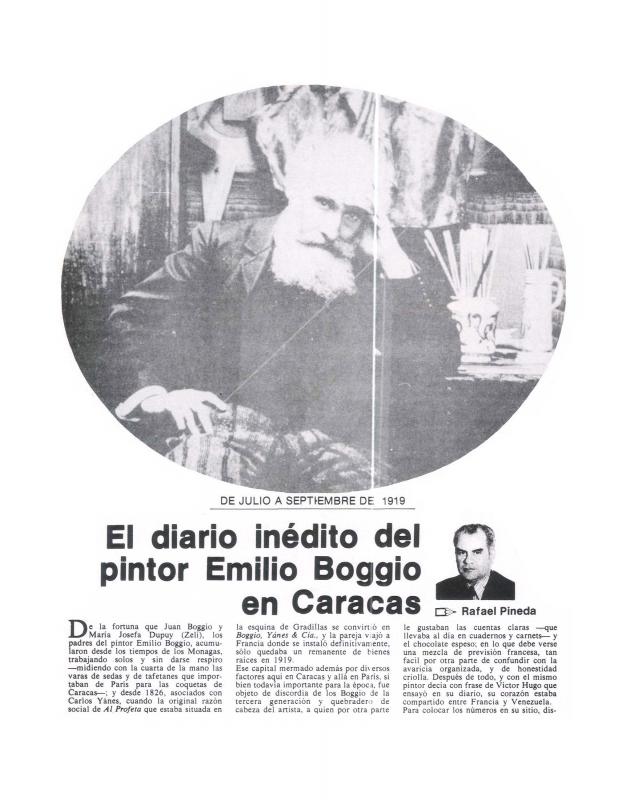This text by the art critic Rafael Pineda on the repatriation to Venezuela of work by the painter Emilio Boggio (1857–1920) was written for an exhibition of seven Boggio landscapes from the Bernard Chappard collection, held at Galería 77 in Caracas. The writer provides key information on exhibitions of Boggio’s paintings and its market value before and after his death. Pineda states facts about the circulation of the work among dealers and collectors as well as covers the valuation of the artist’s work in Europe and Venezuela. Moreover, he mentions the critics who took an interest in the work as well as the main collectors (public and private) that acquired it. By providing this data, the text allows us to grasp the position of this artist in the Venezuelan market prior to the 1980s. The Venezuelan artist (of French origin) actively showed his work in Europe during World War I, during his lifetime. After his death and that of his dealer, Georges Petit, the work disappeared from view in spite of the major effort of certain Parisian critics who organized an exhibition at the Galerie Petit in 1925, five years later. Pineda emphasizes the important intervention by Venezuelan collectors, who assumed the task of recovering and acquiring works in Paris in order to repatriate them. This text also offers titles, dates, and a general description of the seven Boggio paintings from the Bernard Chappard collection that were exhibited at Galería 77 (Caracas, 1978).
For another reading of Boggio’s artwork written by the Mexican poet and diplomat José Juan Tablada, see “La exposición de Boggio” (1919) [ICAA digital archive doc. no. 808640. Enrique Planchart, in turn, focuses on the artist in the context of the “Paisaje venezolano” (doc. no. 855345). Among art critics, Pineda was the one who wrote most about the painter; one of these essays is “El diario inédito del pintor Emilio Boggio en Caracas: De julio a septiembre de 1919” (doc. no. 1161700).



